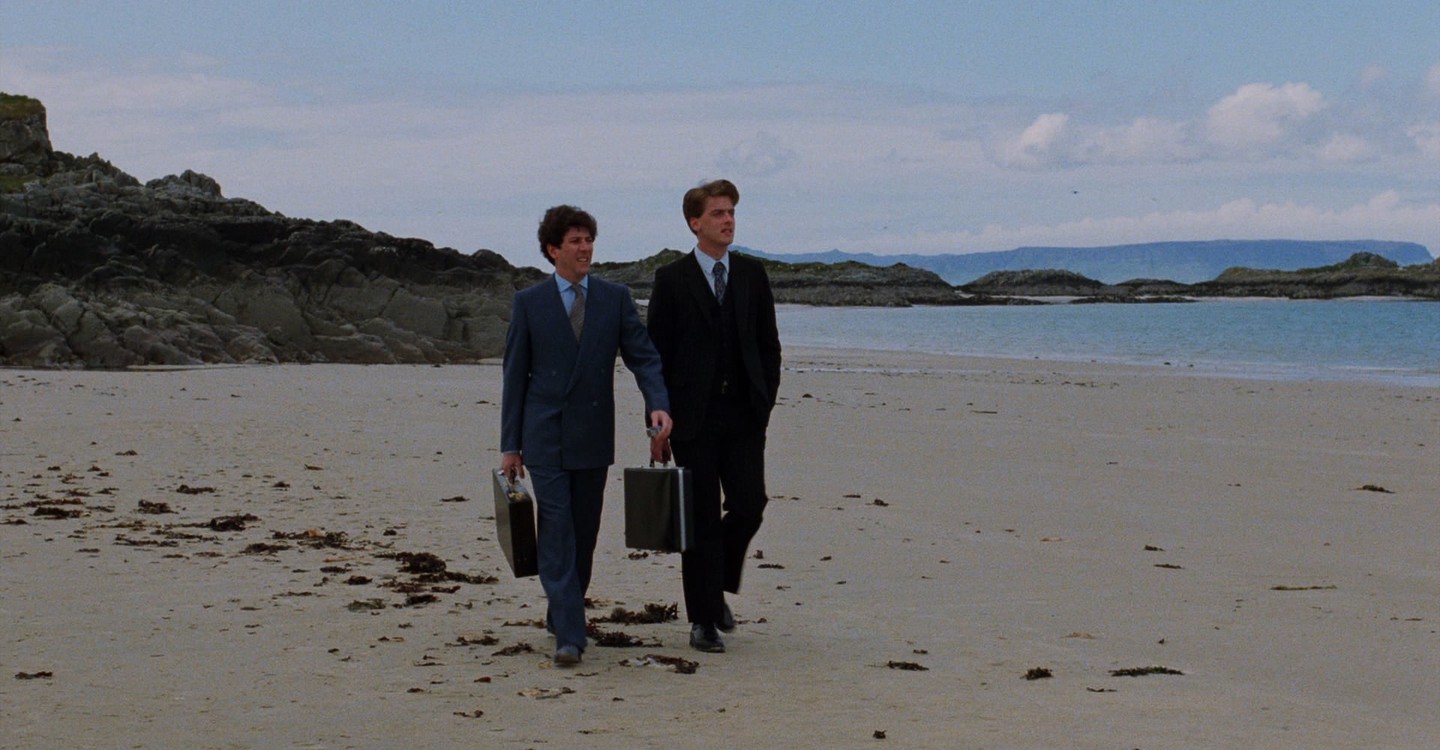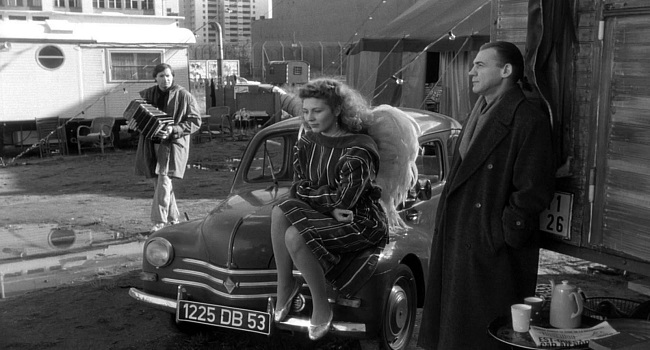
Confession: I’ve been suffering from writer’s block. I don’t know “what” (if anything) has precipitated it – the current state of the world, the fact that I’m screaming toward my 67th birthday, a general malaise, or perhaps all of the above…I cannot say for sure.
Just for giggles (or in an act of pure desperation), I pulled up the Chat GPT app this morning, and typed in: “Give me 500 words on writer’s block.” It only gave me 3:
I got nuthin’.
Thanks. I’m here all week.
But seriously folks…this AI chatbot interface thing is raising serious ethical issues re: the art of creative writing. It’s just…weird. And it’s about to get weirder:
ChatGPT has taken the tech world by storm, showcasing artificial intelligence (AI) with conversational abilities that go far beyond anything we’ve seen before.
The viral chatbot interface is based on GPT-3, said to be one of the largest and most complex language models ever created – trained on 175 billion “parameters” (data points).
However, it’s something of an open secret that its creator – the AI research organization OpenAI – is well into development of its successor, GPT-4. Rumor has it that GPT-4 will be far more powerful and capable than GPT-3. One source even went as far as claiming that the parameter count has been upped to the region of 100 trillion, although this has been disputed in colorful language by Sam Altman, OpenAI’s CEO. […]
Altman himself has dismissed the idea that it is trained on 100 trillion parameters as “complete bullshit,” but some sources are claiming that it could be up to 100 times larger than GPT-3, which would put it in the region of 17 trillion parameters. However, Altman has also gone on record as saying it may not, in fact, be much larger than GPT-3. […]
When something causes as much excitement as GPT-3 has done, there’s an inevitability around the fact that the next iterations may not seem so groundbreaking. After all, once we’ve been amazed at a computer writing poetry, are we going to be as amazed a few years later by a computer writing slightly better poetry?
Ha! That free verse doesn’t even rhyme. Stupid chatbot interface!
Anyway…what was I talking about? Oh yes…writer’s block. In my review of Margarethe von Trotta’s 2013 biopic Hannah Arendt, I wrote:
A comic I worked with a few times during my stand-up days (whose name escapes me) used to do a parody song (to the tune of Dion’s “The Wanderer”) that was not only funny, but a clever bit of meta regarding the very process of coming up with “funny”. It began with “Ohh…I’m the type of guy, who likes to sit around,” (that’s all I remember of the verse) and the chorus went: “Cuz I’m the ponderer, yeeah…I’m the ponderer, I sit around around around around…”
Still makes me chuckle thinking about it. And it’s so true. Writers do spend an inordinate amount of time sitting around and thinking about writing. To the casual observer it may appear he or she is just sitting there staring into space, but at any given moment (and you’ll have to trust me on this one) their senses are working overtime.
So it was that I have found inspiration in my lack thereof (let’s see a chatbot pull that off). To wit, I’ve pondered the myriad films I have seen about screenwriters, novelists, journalists, poets, and playwrights, and curated 10 cinematic page-turners:

American Splendor–From the streets of Cleveland! Paul Giamatti was born to play underground comic writer Harvey Pekar, the misanthropic file clerk/armchair philosopher who became a cult figure after collaborating with legendary comic illustrator R. Crumb. Co-directors Shari Berman and Robert Pulcini break down “the fourth wall” throughout with imaginative visuals. Hope Davis gives a wonderfully deadpan performance as Pekar’s wife.
Written by: Harvey Pekar, Joyce Brabner, Shari Springer Berman, and Robert Pulcini

An Angel at My Table-Jane Campion directed this moving and inspiring biopic about successful New Zealand novelist Janet Frame (beautifully played at various stages of her life by three actresses, most notably Kerry Fox). When she was a young woman, her social phobia and generalized anxiety was misdiagnosed as a serious mental illness and she ended up spending nearly a decade in and out of institutions. Not for the faint of heart.
Written by: Janet Frame and Laura Jones

Barfly-It’s the battle of the quirky method actors as Mickey Rourke and Faye Dunaway guzzle rye and wax wry in Barbet Shcroeder’s booze-soaked dark comedy. The 1987 film is based on the life of writer/poet Charles Bukowski. Richly drawn, right down to the bit parts. Look for Sylvester Stallone’s brother Frank as a bartender who repeatedly beats the crap out of Rourke (I’d lay odds that Rourke could take him in a real-life back alley scrap!). If you’re up for a double feature, I’d suggest the compelling documentary Bukowski: Born into This.
Written by: Charles Bukowski

Endless Poetry – Ever since his 1970 Leone-meets-Fellini “western” El Topo redefined the meaning of “WTF?, Chilean film maker/poet/actor/composer/comic book creator Alejandro Jodorowsky has continued to push the creative envelope.
This 2016 film, the second part of a “proposed pentalogy of memoirs”, follows young Alejandro (played by the director’s son Adan, who also composed the soundtrack) as he comes into his own as a poet. Defying his nay-saying father, he flees to Santiago and ingratiates himself with the local bohemians. He caterwauls into a tempestuous relationship with a redheaded force of nature named Stella. What ensues is the most gloriously over-the-top biopic since Ken Russell’s The Music Lovers. This audacious work of art not only confirms its creator has the soul of a poet, but is a nearly tactile evocation of poetry itself.
Written by: Alejandro Jodorowsky

The Front-Martin Ritt’s downbeat yet politically rousing 1976 drama uses the entertainment industry’s spurious McCarthy era blacklist as a backdrop. Woody Allen is very effective as a semi-literate bookie who ends up “fronting” for several blacklisted TV writers. Zero Mostel is brilliant in a tragicomic performance (Mostel, screenwriter Walter Bernstein and several other participants actually were blacklisted).
Written by: Walter Bernstein

Hearts of the West-Jeff Bridges gives a winning performance as a rube from Iowa, a wannabe pulp western writer with the unlikely name of “Lewis Tater” (the scene where he asks the barber to cut his hair to make him look “just like Zane Grey” is priceless.) Tater gets fleeced by a mail-order scam promising enrollment in what turns out to be a bogus university “out west”. Serendipity lands him a job as a stuntman in 1930s Hollywood westerns. Featuring one of Andy Griffith’s best screen performances. Alan Arkin is a riot as a perpetually apoplectic director. Excellent direction by Howard Zieff.
Written by: Rob Thompson

Henry and June – Fred Ward (who passed away in 2022) delivers one of his finest performances portraying gruff, libidinous literary icon Henry Miller. Writer-director Philip Kaufman’s 1990 drama is set in 1930s Paris, when Miller was working on his infamous novel Tropic of Cancer. The film concentrates on the complicated love triangle between Miller, his wife June (Uma Thurman) and erotic novelist Anais Nin (Maria de Medeiros).
Despite the frequent nudity and eroticism, the film is curiously un-sexy, but still a well-acted character study. Richard E. Grant portrays Nin’s husband. Adapted from Nin’s writings. For better or for worse, the film holds the distinction of being the first recipient of the MPAA’s “NC-17” rating.
Written by: Anais Nin, Philip Kaufman, and Rose Kaufman

In a Lonely Place – It’s apropos that a film about a writer would contain a soliloquy that any writer would kill to have written: “I was born when she kissed me. I died when she left me. I lived a few weeks while she loved me.”
Those words are uttered by Dixon Steele (Humphrey Bogart), a Hollywood screenwriter with a volatile temperament. He also has quirky working habits, which leads to a fateful encounter with a hatcheck girl, who he hires for the evening to read aloud from a pulpy novel that he’s been assigned by the studio to adapt into a screenplay (it helps his process).
At the end of the night, he gives her cab fare and sends her on her way. Unfortunately, the young woman turns up murdered, and Dix becomes a prime suspect (mostly due to his unflagging wisecracking). An attractive neighbor (Gloria Grahame) steps in at a crucial moment to give him an unsolicited alibi (and really spice things up).
A marvelous film noir, directed by the great Nicholas Ray, with an intelligent script full of twists and turns that keep you guessing right up until the end. It’s a precursor (of sorts) to Basic Instinct (or it could have been a direct influence, for all I know).
Written by: Andrew Solt and Edmund H. North (from a story by Dorothy B. Hughes)

The Owl and the Pussycat – George Segal plays a reclusive, egghead NYC writer and Barbra Streisand is a perfect foil in one of her best comedic turns as a profane, boisterous sex worker in this classic “oil and water” farce, based on a stage play and directed by Herbert Ross. Serendipity throws the two odd bedfellows together one fateful evening, and the resulting mayhem is crude, lewd, and funny as hell. Robert Klein is wonderfully droll in a small but memorable role. My favorite line: “Doris…you’re a sexual Disneyland!”
Written by: Bill Manhoff (original stage play) and Buck Henry (screenplay)

Prick Up Your Ears-Gary Oldman chews major scenery in this biopic about British playwright Joe Orton, who lived fast and died young. Alfred Molina nearly steals the film as Orton’s lover, Kenneth Halliwell. Halliwell was a middling writer who had a complex, love-hate obsession with his partner’s effortless artistic gifts (you might say he played Salieri to Orton’s Mozart). This obsession led to a shocking and heartbreaking tragedy. Director Stephen Frears captures the exuberance of “swinging” 1960s London to a tee.
Written by: Alan Bennett and John Lahr
Previous posts with related themes:
Kurt Vonnegut: Unstuck in Time
Barton Fink & Fear and Loathing in Las Vegas
Drunk, Stoned, Brilliant, Dead: The Story of the National Lampoon
William S. Burroughs: A Man Within
More reviews at Den of Cinema
— Dennis Hartley






































 Now Jeff has gone, I feel like one of my band of brothers has left this world, and I’m going to dearly miss him. I’m sending much sympathy to Sandra, his family, and all who loved him. I want to thank him for all our early days together in Jeff Beck Group, conquering America.
Now Jeff has gone, I feel like one of my band of brothers has left this world, and I’m going to dearly miss him. I’m sending much sympathy to Sandra, his family, and all who loved him. I want to thank him for all our early days together in Jeff Beck Group, conquering America. 














